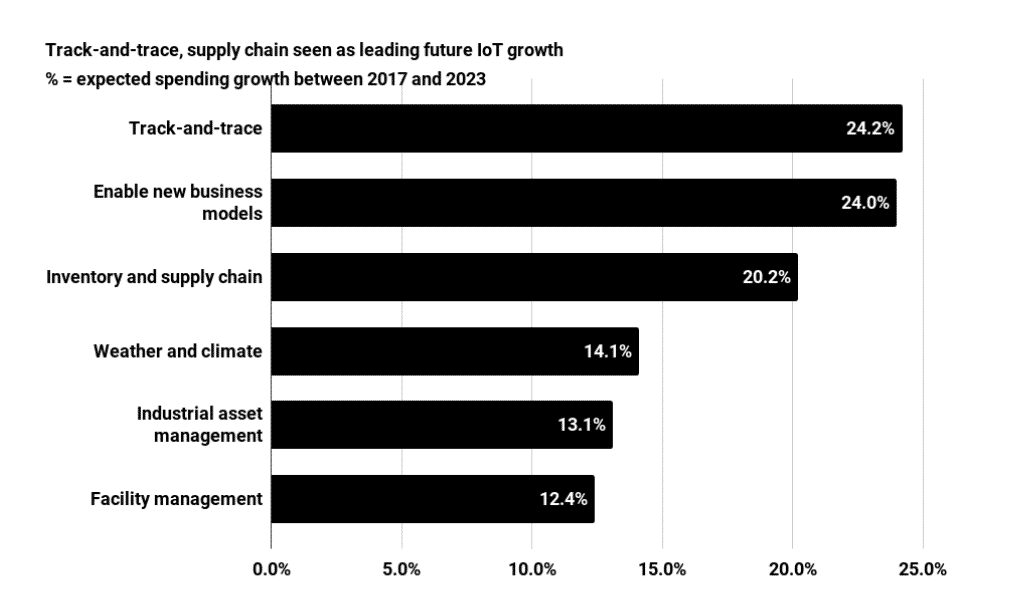Logistics is Changing – How Are You Meeting the Two Main Challenges of the Shift?

Today’s logistics is all about visibility. If logistics providers can’t share exactly what’s going on with their customer shipments at all times, organizations will turn to a provider who can give them that level of insight and control. In this article, I’m going to take a look at some of the main reasons for this shift in the logistics industry, and the two main challenges that make true visibility that much harder to achieve.
Where Does the Emphasis on Visibility Come From?
One of the big changes that happened a few years ago was the FDA’s Food Traceability scheme, known as the Food Safety Modernization Act (FSMA). This effectively polices how food and other perishables like pharmaceuticals are distributed, handled and managed throughout the whole supply chain. This requirement means that anyone who works in logistics needs to be able to track temperature, humidity, and often the location of their shipments. There are different definitions of what the ‘whole supply chain’ is, whether that’s from field to fork, or a segment of that, but the requirement remains the same.
There are different requirements for different types of shipments. For example with vaccines, they may need to be kept at a specific cold temperature throughout the supply chain, while for GMO and non-GMO foods, the requirement may simply be to keep the food separate across the journey, and temperature is less important. No matter what the specific needs, traceability and visibility is key.
IoT devices are a great option for this new logistics reality, as trackers and sensors can be used to provide logistics companies and their customers with all the information that they need to stay on top of shipments, in-transit and at rest. These could wake up to send information sporadically, relaying data such as temperature, humidity, location, impact, and more. It’s no surprise then that according to Forrester Research, track and trace technology is expected to have the largest spending growth among IoT projects up until 2023.

The Two Main Challenges for Logistics Providers
So, great! Full steam ahead for logistics and IoT digital transformation, right? Well… not so fast. I’ve noticed two key challenges that may become roadblocks for logistics providers if they aren’t careful.
Firstly, the connectivity challenge of tracking a shipment through the whole distribution process. When it comes to perishable food products for example, these may start in LATAM or anywhere in the world for that matter. You need to be able to track your shipments globally, without gaps in connectivity or availability.
Secondly, the reverse logistics of tracking. Anyone can add a sensor or a tracker at the first stage of a journey, and then follow the insights through to the end of the supply chain. But then what happens to the IoT sensor? How does this device get recycled, charged, put back into circulation, and used again in a cost-effective way?
A New Normal for Logistics Providers
In response to the regulation and the demand for visibility, logistics companies are leaning on IoT connectivity and creating distribution and fulfilment initiatives that leverage smart pallets and sensors that track all the information necessary. Think about big names such as Brambles and Peco, that are leading the way in sustainable IoT-driven logistics projects.
There isn’t yet a clear answer to the challenge of reverse logistics, but there are a lot of companies working on innovation. It’s hard to know what’s going to prove the most successful, but the industry is seeing ideas such as disposable asset trackers that are increasingly possible as the components continue to drop in price, or global distribution centers where people are strategically placed to collect trackers, charge them, and put them back into circulation. Some companies may compensate the last-mile destination stakeholders to return them by mail, or drop them off at a centralized location. Companies who can make a success of reverse-logistics will definitely be a step ahead, if they have managed the first challenge – the connectivity.
At floLIVE, that’s what we’ve created – a global connectivity solution that provides the always-on connectivity that logistics providers rely on to meet their regulatory and legal track and trace requirements. We have a robust core network which comes in a lot of flavors, covering everything from 5G and NB-IoT or CAT-M which is enabling these IoT use cases to start with, but also compatible with 4G all the way down to 2G or low power networks where that’s what’s available.
We utilize local breakouts all over the world, so that devices can automatically connect to local providers anywhere that they travel, without worrying about permanent roaming, or other in-country data compliance laws like GDPR. You get a single product that allows you to connect globally, with OTA provisioning for your SIM cards, and great control like auto-healing functionality so that you never lose availability, and can keep track of your devices, and therefore your shipments. At all times, you can view that information in real-time in the cloud.
Roambee is a great example of a company who has met both of the main challenges head on, with global distribution centers in place for reverse logistics, and with the connectivity in place to provide real-time asset monitoring with granular, item-level visibility across the supply chain.
Logistics and Supply Chain Use Cases are the Future of IoT
The logistics providers who achieve this level of connectivity will be able to accelerate their business growth further than just with visibility alone. As soon as you have that real-time insight, you can make changes to ensure you don’t waste your perishable items, such as adjusting the route or the temperature of your cargo if you see that it’s dropping below a certain threshold, or getting in touch with your distribution stakeholders to get them to find the root cause of a problem before you fall out of compliance.
One thing is for sure, logistics is going to be an exciting place to be over the next few years! If you’re looking to snap that connectivity piece of the puzzle into place, we should talk.









